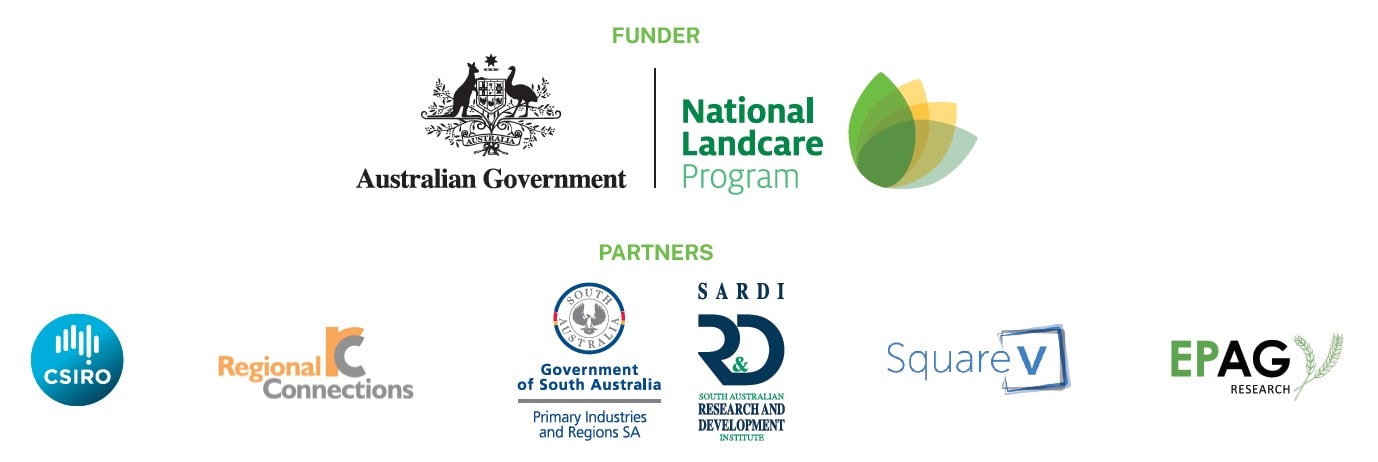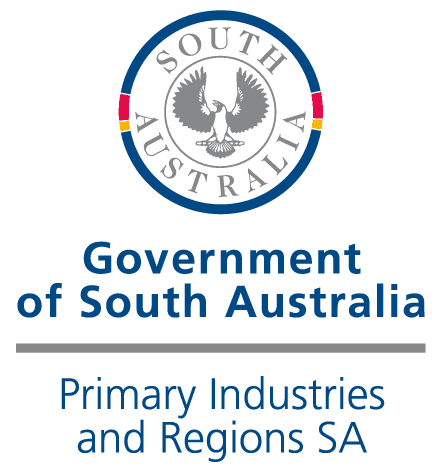AIR EP Newsletter – 11 Nov 2022
Yield Prophet Reports
The Resilient EP project aims to bring together on-farm technology to enhance decision making, profitability and reduce risk. Stored moisture, yield potential and risk are 3 main focal points of the project. Within this Yield Prophet(R) is used to understand and demonstrate the factors that drive yield potential, the yield gap and risk at 8 locations across the Eyre Peninsula. The project is funded by the National Landcare Program.
The final Yield Prophet reports for 2022 for the 8 locations on EP generated on 11 November 2022 are available for download.
Please note:
- Yeelanna: Emu canola was the actual variety sown, but had to use ‘Early canola’ to match the phenology (quick variety), but will not have the same yield potential as Emu.
- Minnipa: sowed Ballista but we used Mace for the report (Ballista not an option in Yield Prophet)
- Cockaleechie: sowed Vixen but we used Sunco for the report
- We made the assumption that stubble load was 50% of harvest dry matter.
On the attached reports in the first graph, the blue line is the water limited yield potential, that is the maximum possible yield with the given water. The probability (Y axis), indicates the probability that you will achieve that yield. The green line indicates the yield potential given current nutrition (nitrogen). The gap between the green and blue line is the ‘yield gap’ or further required nitrogen to reach water limited yield potential. When talking of yield potential we are looking at water limited yield at the 50% probability.
Weather stations and soil moisture probes
Have you checked out the AIR EP weather station and soil moisture probe networks? There are two platforms to view from the AIR EP website home page, the first being the traditional Wildeye platform, the second being a new platform developed as part of the Resilient EP project, to take into account the plant available water capacity of soils and display the information a bit differently - let us know what you think.
Note: we have also just added the Mangalo Hall weather station to the Wildeye platform.



Harvest Code agreement reached
South Australian grain producers will be able to use either the Grassland Fire Danger Index (GFDI) or the new Fire Behaviour Index (FBI) under the Harvest Code of Practice during this harvest, after an agreement was reached between Grain Producers SA (GPSA), the State Government and SA Country Fire Service (SACFS).
The new FBI was introduced on September 1, as part of the new Australian Fire Danger Rating System (AFDRS), which changes the calculation methodology and key cut off value for grain harvest to cease at an FBI 40, where previously the index and cut off value was stipulated as a GFDI 35.
SA CFS Chief Officer Brett Loughlin said it is important to note, that while the AFDRS includes significant new information regarding a range of different vegetation types, the data informing decision making by grain producers whether to harvest or not due to weather conditions remains relatively consistent.
GPSA Chief Executive Officer Brad Perry said it was pleasing to see a common-sense approach is being taken this harvest with grain producers still able to use the GFDI of 35.
For grain producers using the new FBI, SACFS has made available an online fire behaviour calculator – AURORA. The calculator can be found on the CFS website and once installed can be adjusted from 10 metres to two metres for guidance on a decision to cease harvesting.
For further information please visit https://www.cfs.sa.gov.au/plan-prepare/business-farms/farm-fire-safety-prevention/#grain
Don't be a bright spark
For the upcoming harvest season, where fuel load is expected to be very high, Grain Producers SA has launched a “Don’t be a Bright Spark” campaign to remind grain producers to have their farm fire prevention strategies in place. GPSA has put together a fact sheet on the five simple steps to help reduce the risk of harvester fires. The steps are: Prepare, Maintain, Monitor, Be Safe & Communicate. Fire prevention and safety is a collective effort, and it is important that all farmers and the community work together to ensure the fire risk is minimised as much as possible. Find out more about the campaign on the GPSA website:
Link: https://grainproducerssa.com.au/project/environment-sustainability-safety/#brightspark
Found any locusts on your farm?
Locusts are likely to be seen in the Upper North/Flinders Ranges pastoral areas and the Upper Eyre Peninsula during spring, and possibly in some parts of the Mid North, Riverland and Mallee.
All locust sightings must be reported. Landholders and producers in higher risk areas should factor locusts into their pest control planning.
Exotic Plant Pest Hotline
Suspected plant diseases, exotic pests, or noxious weeds must be reported immediately.
Call us if you find plant pests or diseases that could be a national threat, even if you are unsure. This can be done anonymously.
24 hours a day, 7 days a week
Freecall 1800 084 881
Find out more at pir.sa.gov.au/locusts
Chance to participate in research - Heat stress in sheep
Our team of researchers from the Davies Livestock Research Centre, University of Adelaide aims to improve the reproductive efficiency of the Australian Sheep industry. The focus of our current research is to increase ewe and ram fertility and fecundity, by reducing the impacts of heat stress. To achieve this, we are developing a series of management tools that can be used across producer systems to increase reproductive efficiency, optimise animal health and recovery prior to and throughout gestation, and provide an option to combat the negative effects of heat stress.
We propose the use of a vitamin drench or a melatonin implant as these are easily implemented within production systems and have proven ability to mitigate heat stress and improve embryo viability. Alongside of this, we seek to develop climate warning systems that can predict the climatic conditions that are likely to impair ewes and ram fertility and fecundity. This will enable producers to use these supplements only when necessary to improve reproductive outcomes.
We are looking for producers with a minimum of 200 ewes, who can either individually identify animals, or to manage groups to keep treated and untreated animals separately. We would need to gather weight and/or BCS data before and after joining.
If you are interested contact Hannah Griffiths, 0458403390 or hannah.griffiths@adelaide.edu.au
GRDC weed survey
The GRDC is evaluating a sample of its recent extension investments in weed management and would like to understand more about how you learn about and manage weeds and asks if you would be willing to participate in a short on-line survey on your recent experiences and weed management practices? The survey is voluntary, and the results will be anonymized. In appreciation for your input, for each completed survey $5 will be donated to either Beyond Blue, Sober in the Country or Rural Aid (to a combined limit of $2000). To complete the survey please go to https://www.surveymonkey.com/r/GRDCweeds
This survey is being undertaken by the Colere Group. Your individual responses will not be provided to GRDC or any other third party. If you have any questions, please contact Dr Lyndal Hasselman at l.hasselman@colere.com.au
CONSULTATION UNDERWAY TO FIND BEST SOLUTION FOR INDIVIDUAL SHEEP AND GOAT TRACEABILITY FOR SA
Work through Livestock SA’s whole-of-industry Sheep and Goat Traceability Steering Committee has moved into its next phase as industry consultation on the mandatory implementation of national individual identification for sheep and goats gets underway.
Livestock SA President Joe Keynes said the Steering Committee had completed two scoping meetings and has now met with the consultant appointed to undertake the business case, ACIL Allen, to ensure the industry consultation process gathers the right information.
“ACIL Allen will engage with sheep and goat producers, agents, accumulators, feedlots, processors, and saleyards to ensure the issues that will be encountered by different groups are identified, considered and factored into any changes to current sheep and goat traceability processes.
“For some in the supply chain it will be a relatively simple change in tag type or scanning process, while for others such as saleyards we expect there to be more substantial infrastructure costs incurred.
“The Steering Committee and Livestock SA have heard producers’ concerns regarding exemptions for lambs that are vendor bred direct to slaughter, and rangelands goats and we are working through each of these scenarios for our state.
“We have also heard there will be additional costs through the supply chain, so we need to look for the best way to deal with these costs because ultimately the cost of not meeting national traceability standards is a greater risk to the future profitability, market access and emergency animal preparedness for our industry.
“While this work needs to fit into a nationally harmonised system, we are focused on making sure any overarching national traceability recommendations suit our state’s supply chain.
"We need as many people as possible from the supply chain that will be impacted to complete this survey,” said Mr Keynes.
You can complete the survey via the link or by visiting the Sheep and Goat Traceability page on the Livestock SA website.
Background
The ability to trace individual sheep and goats through the supply chain is critical to maintain the product integrity, market advantages and emergency disease response capability for the livestock industry. The current visual mob-based system has worked effectively in the past, but improvements are now needed.
To address these concerns, in July 2022 national, state and territory agriculture ministers agreed to work with industry towards mandatory implementation of national individual identification for sheep and goats in each jurisdiction by 1 January 2025.
Livestock SA is leading a project into the implementation of the mandatory electronic identification (eID) of sheep and goats. The project is funded by the Sheep Industry Fund and the Department of Primary Industries and Regions SA.

GRDC Sandy Soils fact sheets and survey
A series of fact sheets have been developed through the GRDC funded project: Increasing production on sandy soils in low and medium rainfall areas of the Southern Region CSP00203.
Check them out:
Seeding sandy soils - Managing water repellence at seeding: moisture access strategies
Soil wetter - Managing water repellence at seeding: soil wetting agents
Inclusion ripping technology - Understanding passive inclusion ripping
Ripping technology - Technology considerations for cost-effective subsoil loosening
Farmers, please consider completing the sandy soils survey - this survey aims to identify how farmers have treated their sandy soils in the past, what they are doing with them currently, and what they expect to do with them in the future. The survey should take less than 10 minutes, and responses will assist with directing future research, development and extension.





Agrifutures Australia Rural Women's Award
Do you have the desire, commitment and leadership potential to make a greater contribution to Australia’s rural and emerging industries, businesses and communities?
Applications for the 2023 @AgriFutures Australia Rural Women's Award are now open until Wednesday, 16 November 2022.
For more information, visit 👉 https://agrifutures.com.au/people-leadership/rural-womens-award/